In the circuit shown, the cell is ideal with emf = 2V . The resistance of the coil of the galvanometer G is 1Ω.

(i) No current flows in G
(ii) 0.2A current flows in G
(iii) potential difference across C1is1V
(iv) Potential difference across C2 is 1.2V
(i),(iii)
(i),(ii),(iv)
(ii),(iii),(iv)
(i),(ii),(iv)
The correct Answer is:C

i=24+1+5=15A=0.2A
p.d. across C1:
VA−i×4−i×1=VC
VA−VB=5i=1V
p.d across C2:
VB−i×1−i×5=VD
VD−VD=6i=1.2V.
Topper's Solved these Questions
- THERMAL AND ELECTRIC EFFECT oF CURRENTBOOK - CP SINGHCHAPTER - THERMAL AND ELECTRIC EFFECT oF CURRENTEXERCISE - Exercises
101 Videos
- SEMICONDUCTORSBOOK - CP SINGHCHAPTER - SEMICONDUCTORSEXERCISE - Exercises
140 Videos
- WAVE NATURE OF LIGHTBOOK - CP SINGHCHAPTER - WAVE NATURE OF LIGHTEXERCISE - EXERCISES
140 Videos
Similar Questions
In the circuit shown below the cell is ideal, with emf = 2 V: The resistance of the coil of the galvanometer G is 1Ω. Then, find the potential difference across C1 (in volts), in steady state
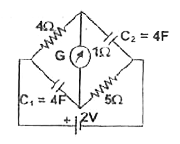
View SolutionFind the resistance of a conductor if the electric current flowing through it is 0.35 A when the potential difference across it is 1.4 V.
View Solution
Knowledge Check
In the circuit shows in Fig. 6.63, the cell is ideal with emf 9V. If the resistance of the coil of galvanometer is 1Ω, then
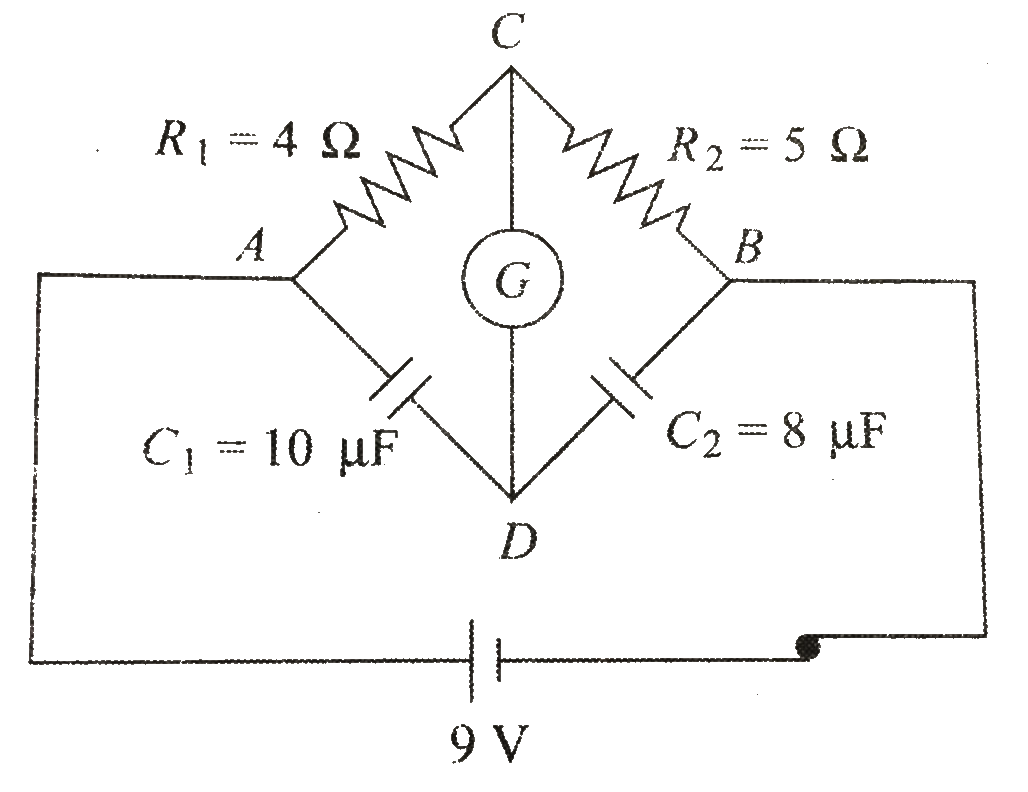 Ano current flows in the galvanometerBcharge flowing through 8μF is 40μCCpotential difference across 10μF is 5VDpotential difference across 10μF is 4V
Ano current flows in the galvanometerBcharge flowing through 8μF is 40μCCpotential difference across 10μF is 5VDpotential difference across 10μF is 4VIn the circuit shown, the cell is ideal , with emf=15V. Ecah resistance is of 3Ω. the potential difference across the capacitor is
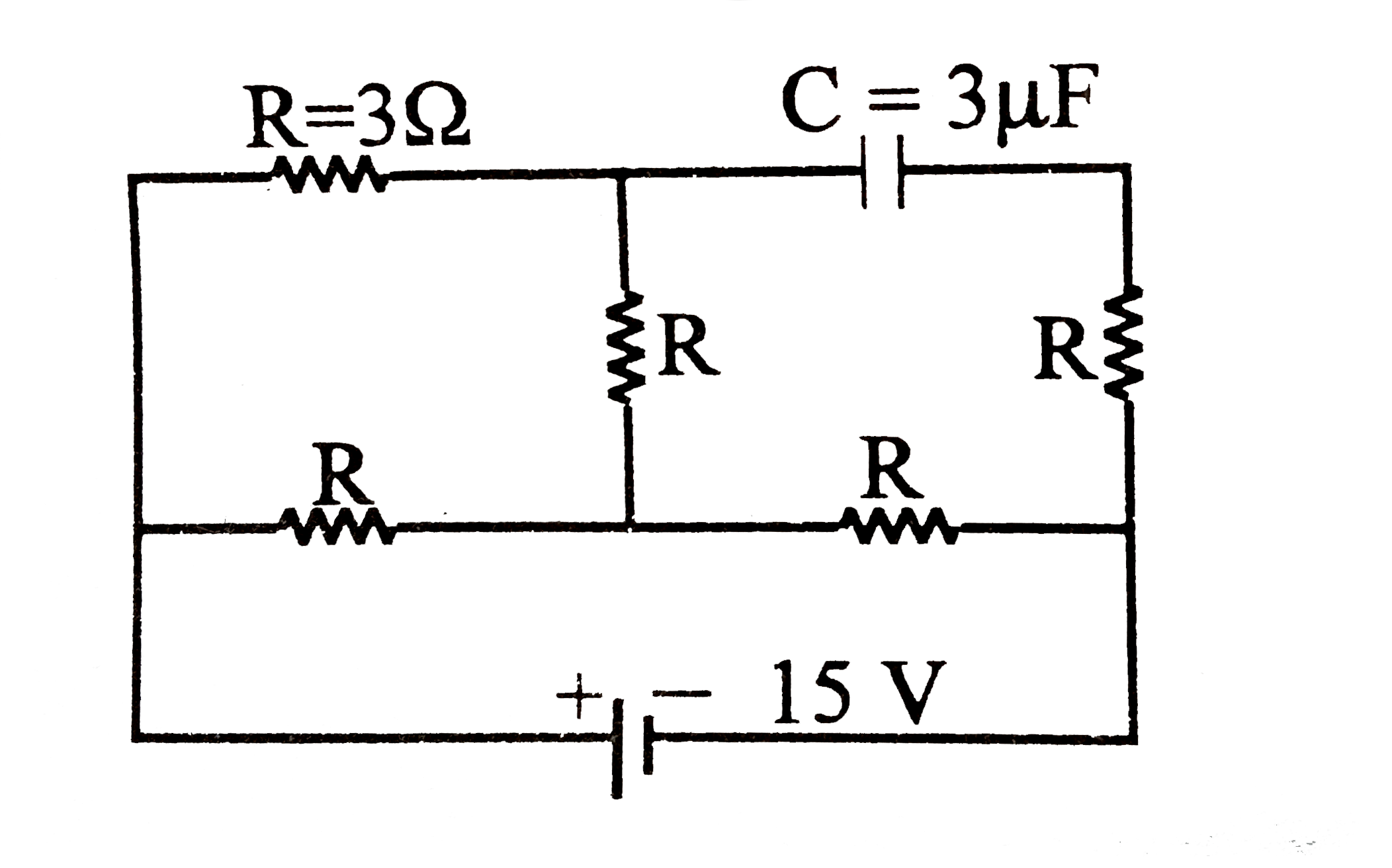 AzeroB9VC12VD15V
AzeroB9VC12VD15VIn the circuit shown in fig. the cell is ideal with emf 15V. Each resistance is of 3Ω. The potential difference across the capacitoro in steady state is
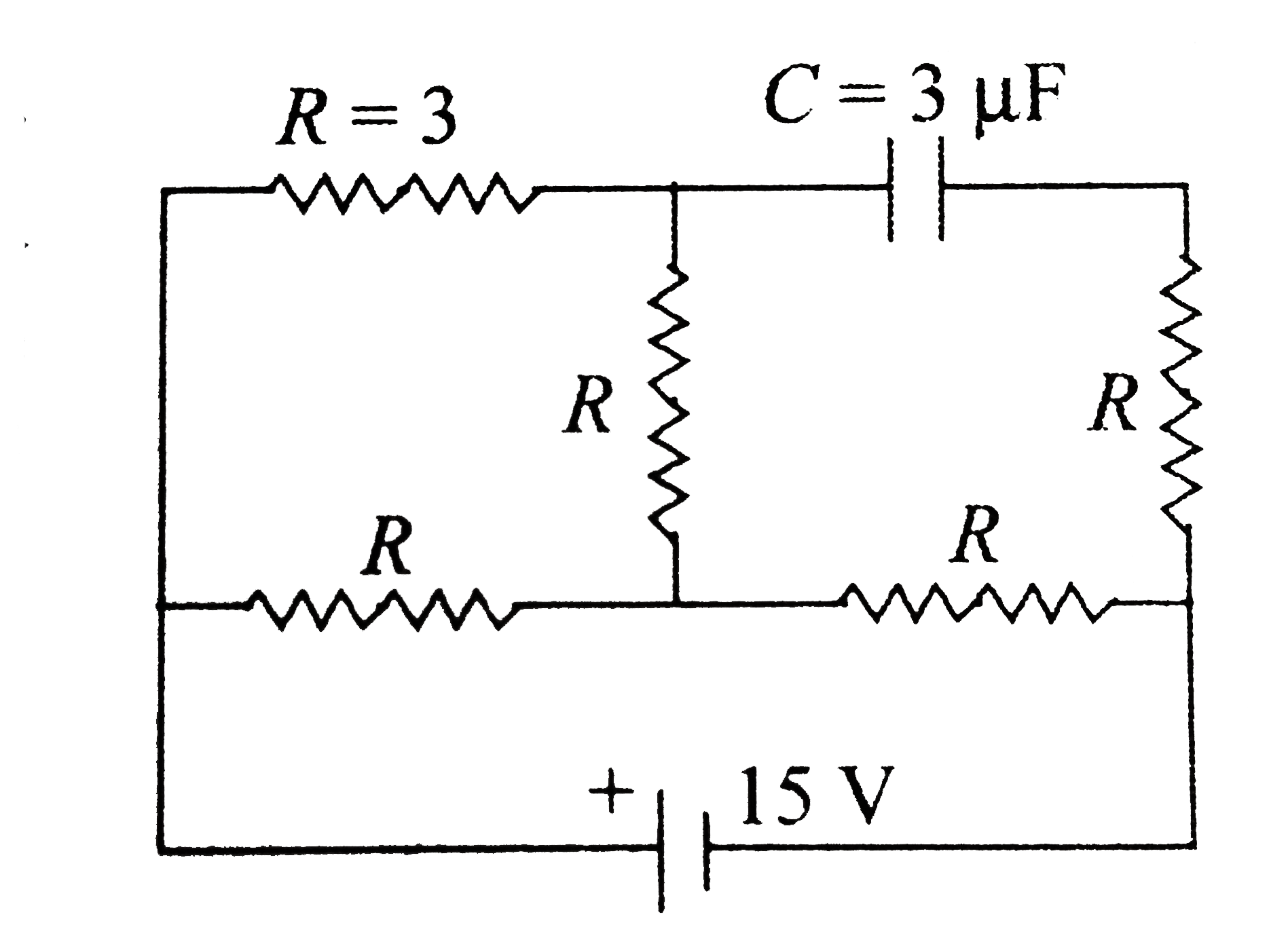 A0B9 VC12 VD15 V
A0B9 VC12 VD15 V
In the circuit diagram given alongside, find:
(i) total resistance of the circuit,
(ii) total current flowing in the circuit, and
(iii) the potential difference across R1
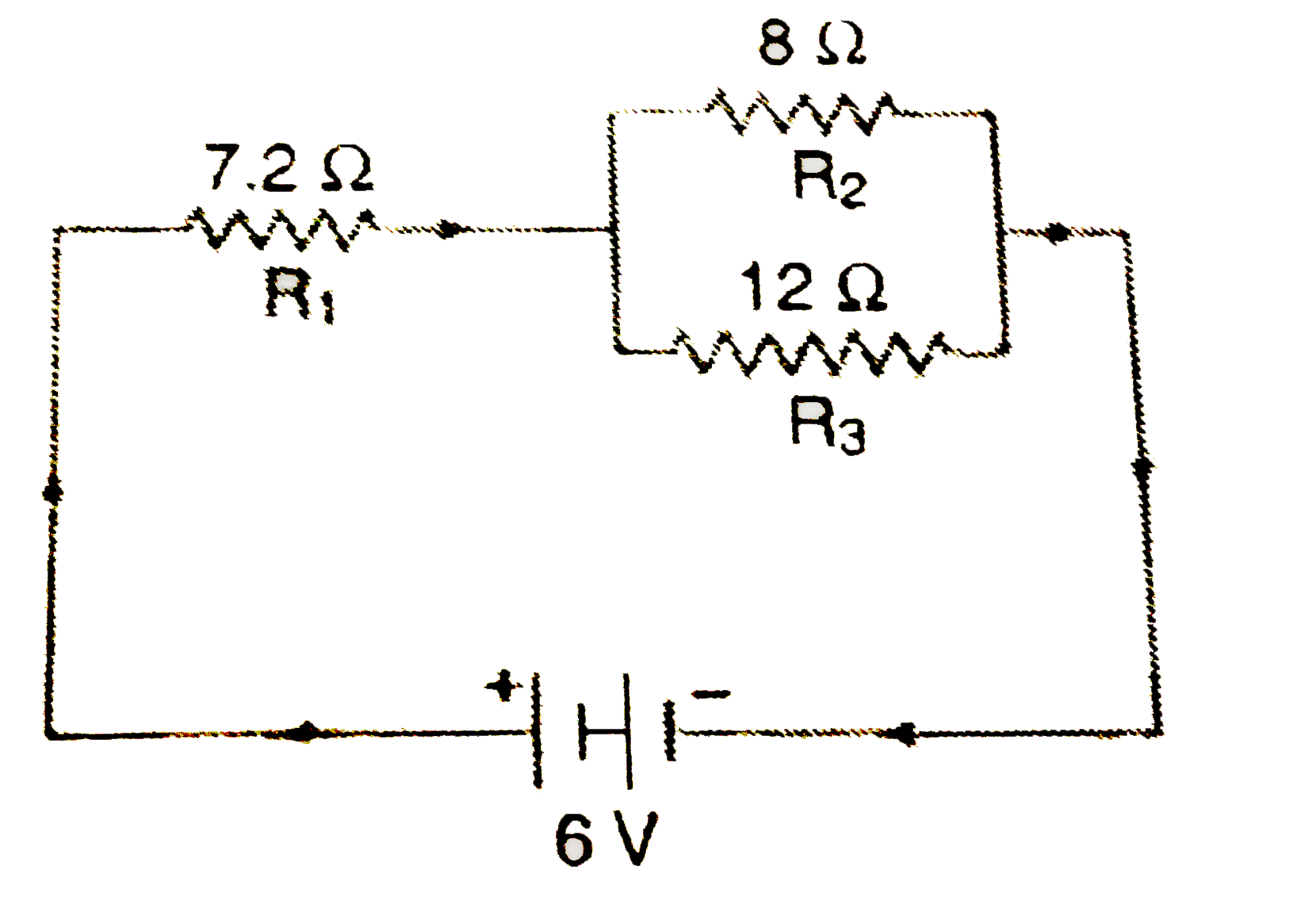
View SolutionHow much current flows through a 2 kΩ resistor when a potential difference of 4 V is applied across its ends ?
View SolutionA set of 4 cell each of emf 2V and internal resistance 1.5Ω are connected across an external load of 10Ω with 2 rows, two cells in eacg row. Calculate the current in each row and potential difference across 10Ω
View SolutionA current of 2A flows in a system of conductor as shown. The potential difference (VA−VB)
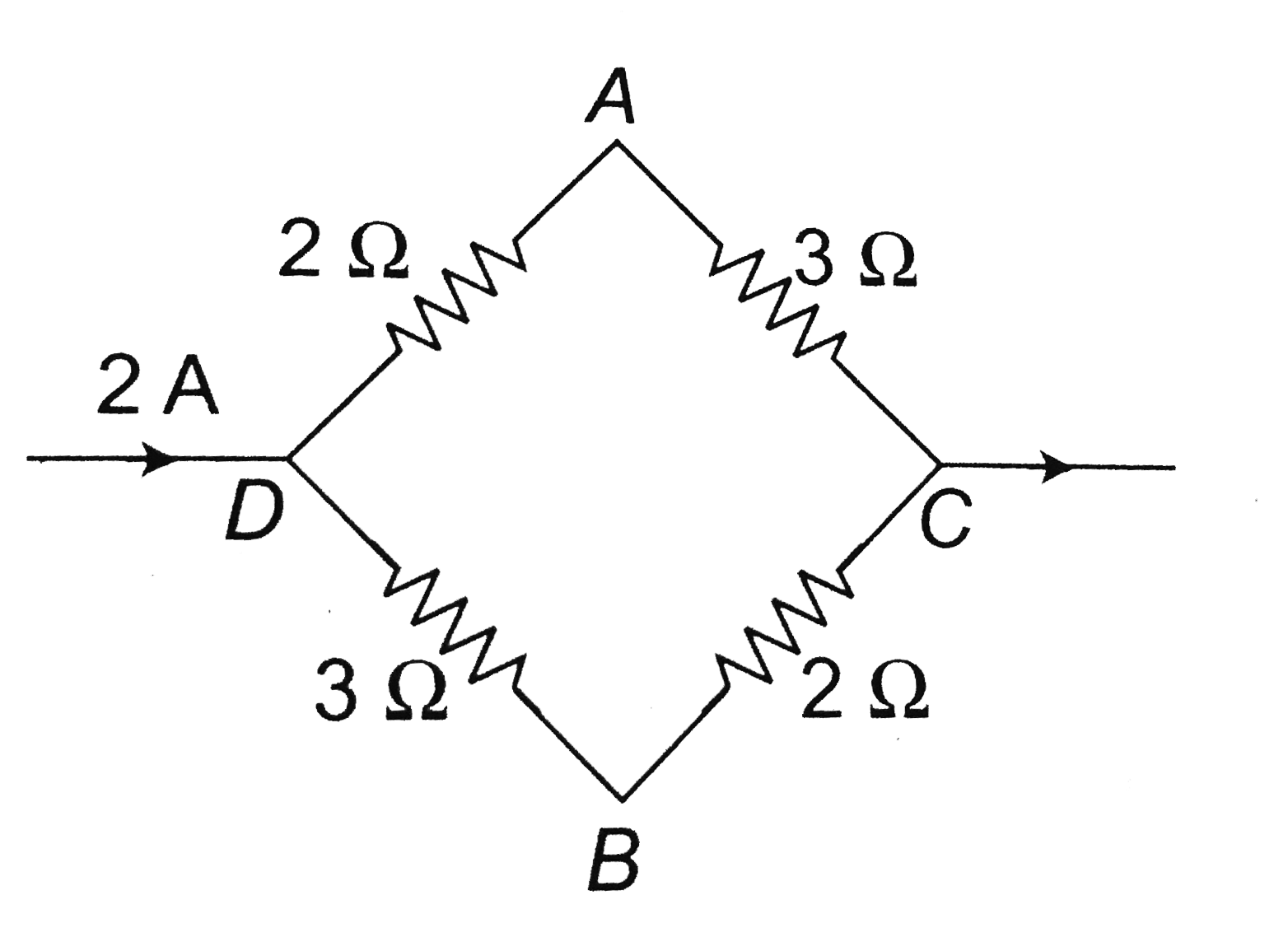
View SolutionTwo capacitances of capacity C1and C2 are connected in series and potential difference V is applied across it. Then the potential difference across C1 will be
View Solution
